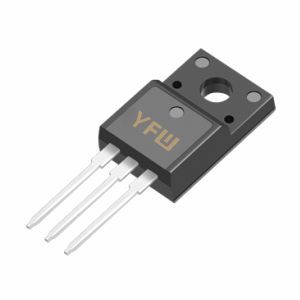Preventing MOSFET Breakdown: Key Strategies for Reliable Operation
Date:2025-04-28 Categories:Product knowledge Hits:568 From:Guangdong Youfeng Microelectronics Co., Ltd
Overvoltage Protection:
Use Zener diodes or Transient Voltage Suppressors (TVS) to clamp gate-source voltage within safe limits . For high-energy transients, TVS diodes with fast response times divert excess voltage, preventing gate oxide breakdown .
Current Limiting:
Series resistors or PTC thermistors restrict current flow during surges, while fuses provide fail-safe protection against sustained overcurrent . Ensure MOSFETs operate within their Safe Operating Area (SOA), avoiding thermal runaway caused by excessive current-voltage combinations .
ESD Control:
Implement ESD protection diodes between gate-source and drain-source terminals to absorb electrostatic shocks . Maintain a static-free environment during handling—use conductive packaging, grounded tools, and anti-static wrist straps .
Thermal Management:
Heat sinks, thermal vias, and optimized PCB layouts enhance heat dissipation. Avoid prolonged operation near maximum junction temperature (Tjmax) to prevent performance degradation .
Circuit Design Best Practices:
Drive MOSFETs with stable gate voltages to avoid overstress.
Add RC snubbers to suppress voltage spikes in inductive loads .
Shorten gate traces to minimize parasitic inductance .
YFW Microelectronics’ MOSFETs, such as the YFW4N65AMJ and YFW40P03DF, are engineered with built-in ESD protection and low RDS(on) for efficient heat management . Partner with us for customized solutions that ensure long-term reliability in automotive, industrial, and consumer applications.

Previous:
Classification, Structure, and Principle of MOSFET
Next:
Organic Field-Effect Transistors (OFETs): A Flexible Electronics Revolution